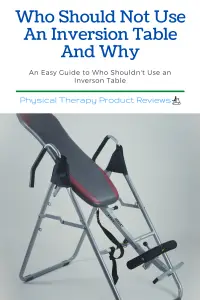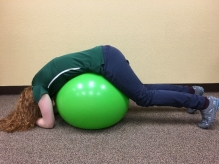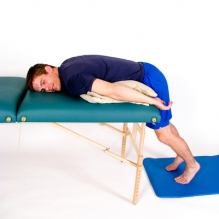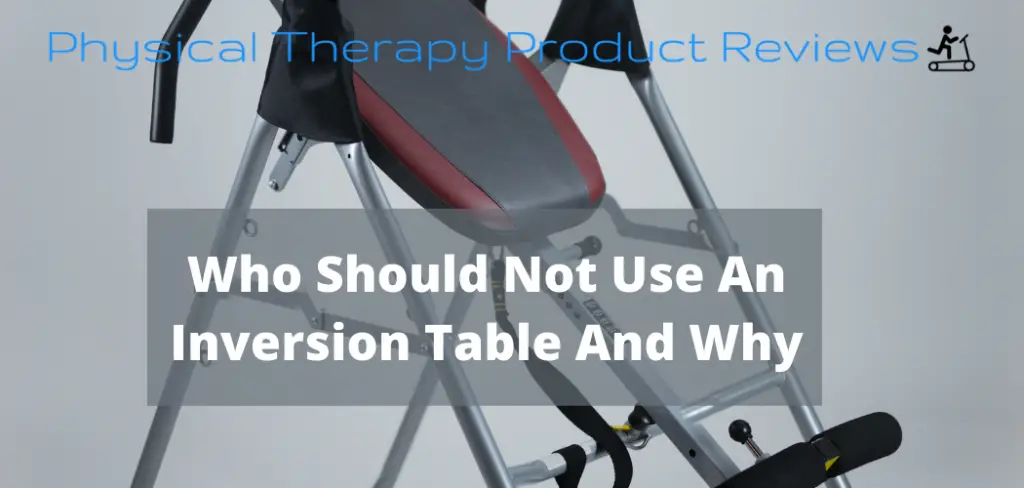Inversion tables are a great way to improve your health in an easy and affordable manner. They can help relieve back pain, improve circulation in the spine, and reduce swelling in the feet.
However, inversion tables should not be used by everyone! People who have osteoporosis or any other spinal condition that would make inversions unsafe for them can have serious issues if they use an inversion table. In this article, we will discuss who should not use an inversion table and why!
Who Should NOT Use an Inversion Table and Why:
Even though an inversion table is a safe and effective treatment for most people, some specific people and conditions should avoid using an inversion table.
- Anyone who has glaucoma should avoid inverting as it may cause a sudden change in pressure in the eye and lead to glaucoma rupture in the eyes.
- People with high blood pressure or any other medical condition that causes low blood pressure should avoid inversion tables as it may put them at risk of blood pressure-related complications. If your blood pressure is well controlled then ask your doctor if you can use an inversion table.
- Anyone with osteoporosis in the lumbar spine or any other part of their spine should be cautious. Especially after getting back upright from using an inversion table, and we recommend using at a slight angle such as 30 degrees of inversion.
- Women who are pregnant. This is more of a precaution than anything, but there are other ways to get spinal decompression that is less risky.
Other Inversion Table Safety Tips:
 In addition to these people who should not use an inversion table for medical reasons, there are other precautions to ensure safety. These include:
In addition to these people who should not use an inversion table for medical reasons, there are other precautions to ensure safety. These include:
- Never invert until you are sure your feet and ankles will support you
- Avoid hanging upside down for more than a few minutes at first. Gradually build up their tolerance to being inverted.
- Be sure to have someone nearby in case you need help. There are many risks associated with inversion, so it’s essential that you don’t try inverting on your own during the first few tries.
- Be sure that the inversion table is on a flat surface, so it doesn’t tip over if you are upside down.
Are Inversion Tables Safe to Use?
Yes, using an inversion table is safe for the majority of people. An inversion table can be a valuable piece of the puzzle for treating low back pain in addition to a stretching and strengthening program.
As with starting any new program, you will have to start small and work your way up to being inverted for more extended periods. We recommend starting at 5 minutes and then taking a break. You can do multiple sessions a day.
Each week you use an inversion table, you can increase the time inverted by 10-15% to avoid the risk of a serious injury and to allow your body to get used to being upside down.
When Should You Not Use an Inversion Table?
There are some situations in which you should not use an inversion table. These include:
- If you have a recent history of stroke or heart attack, inversion tables could increase the risk for another one at this time, so it’s best to avoid inverting if this is your case
- If you have glaucoma in either eye, inversion tables should be avoided as it could cause a sudden change in pressure and lead to serious problems with vision or even glaucoma ruptures in the eyes.
- If you have had a recent spinal fracture
- If you have had a recent change in blood pressure medication
- If you are unsure about whether an inversion table is right for you, be sure to talk with your doctor in advance.
Alternatives to an Inversion Table
If you have any conditions that prevent you from using an inversion table, there are other ways to achieve spinal decompression. These exercises are still achieving spinal traction and reducing pressure on the spine and nerves.
Exercise Ball Back Traction
Here you lay on top of an exercise ball with your hips over the ball and slowly roll back and forth to support your shoulders and chest. Gradually ease into more of your body weight onto the ball until you can fully relax and let gravity traction your pelvis until you get back relief.

Counter Top Traction
Get a chair or a sturdy piece of furniture next to your countertop. Place your hands on the chair and countertop and hold yourself up as you let your legs hang down. Gravity will pull on your pelvis and legs, creating traction through the spine. Hold this position as long as your hands will let you up to 2 minutes. You can also perform from the elbows if needed. You can perform this as many times as you want throughout the day.
End of Bed Self Traction
Laying on the edge of your bed with the legs hanging off the end. Let your legs relax and let gravity pull your hips and pelvis down to the floor. This provides decompression to the lumbar spine and is a comfortable position to lay in for a long time. Try to stay in this position for up to 5 minutes, and you can repeat multiple times a day.

Pro Tip: This is an excellent position for anyone with severe osteoporosis or glaucoma due to the ease of doing it.
Partner Lumbar Traction
Lay on your back with one leg bent and one leg straight. Have your partner stand at your feet and hold your leg that’s straight at the ankle. Your partner can then lean backward, pulling on your leg, which creates a traction pull on the back and creates a decompression. This is a safe and effective way to get pain relief on the spine; the only issue is that you need a partner to do it.
Conclusion
Using inversion tables can provide a lot of relief for many people with back pain. However, there are some instances in which you should not use an inversion table or alternative ways to get spinal decompression without using one at all.
If your doctor has said that inversion is suitable for you and your injury, it is safe to purchase one and invert.
If you have any of the conditions listed in this article, consider trying one of the alternative methods to achieve spinal decompression without having an inversion table in your home.
How to Stay Active After Cervical Fractures: Expert Tips and Advice
Dealing with Painful Stairs After Ankle Replacement Surgery
Walking After a Total Ankle Replacement: Tips for a Successful Recovery
Exercises While Non-Weight Bearing After Ankle Replacement: Elevation, AROM, Leg Raises, and More
Ankle Pain with Stairs: Causes and Home Treatment Options
5 Common Mistakes You’re Making After an Ankle Sprain
Disclaimer: The information provided in this post is for educational purposes only. This is not a substitute for a medical appointment. Please refer to your physician before starting any exercise program.







